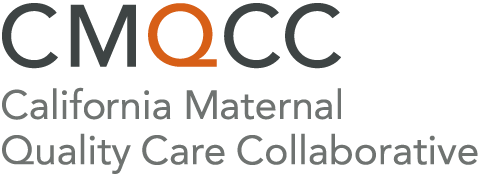Hypertensive disorders of pregnancy (HDP) are one of the leading causes of pregnancy-related mortality and leading contributors to premature birth. Following the California Pregnancy-Associated Mortality Review, preeclampsia-related deaths were determined to have a significant chance of prevention.
To help healthcare providers implement best practices for early recognition and treatment of hypertensive disorders of pregnancy, the Improving Health Care Response to Hypertensive Disorders of Pregnancy (HDP) toolkit was developed by the Hypertensive Disorders of Pregnancy Task Force and published by CMQCC to support timely recognition and response to maternal hypertension and preeclampsia. This version updates the 2014 California Department of Public Health and CMQCC Preeclampsia Toolkit and contains expanded content to cover all HDP.
Beyond the expanded scope, other key changes include:
- Updated terminology and diagnostic criteria for hypertensive disorders of pregnancy
- Management guidelines in alignment with recent changes in the American College of Obstetricians and Gynecologists’ definition of severe hypertension with treatment guidelines for lower “borderline” blood pressure values
- Guidance on low-dose aspirin for prevention of preeclampsia and long-term follow up after hypertensive disorders of pregnancy
- Best practices including accurate blood pressure measurement, a Preeclampsia Early Recognition Tool (PERT) and nursing assessment protocols
Preeclampsia Collaboratives
CMQCC led a Preeclampsia Quality Improvement Collaborative with approximately 25 hospitals in 2013. The primary aim of this collaborative was to help participating hospitals reduce the rate of severe morbidities in women/birthing people with preeclampsia/eclampsia by using tools developed to support early recognition, diagnosis, treatment and management of preeclampsia.
In 2013, CMQCC launched the California Partnership for Maternal Safety (CPMS), a three-year outreach collaborative funded by Merck for Mothers to help hospitals implement patient safety bundles for preeclampsia and obstetric hemorrhage. In order to best accommodate the 126 hospitals across California participating in CPMS, CMQCC used “the mentor model,” where a physician and nurse mentor with maternal quality improvement experience were matched with groups of five to eight hospitals. The CPMS Collaborative focused on helping hospitals implement CMQCC’s evidence-based toolkits in tandem with the use of safety bundles to standardize their approaches to preeclampsia and obstetric hemorrhage.
Ongoing Efforts
CMQCC is currently collaborating with the March of Dimes on a low-dose aspirin initiative to reduce preeclampsia and related preterm birth using a hospital-community approach.
CMQCC member hospitals are also encouraged to use the Maternal Data Center (MDC) to monitor their hypertension and preeclampsia metrics. Learn more about hypertension and preeclampsia data tools available in the MDC.
Improving Health Care Response to Hypertensive Disorders of Pregnancy Toolkit
Download Improving Health Care Response to Hypertensive Disorders of Pregnancy Toolkit (2021, rev. 2024)
Beginning April 30, toolkits and related resources on our website will require a CMQCC Account login. First, locate the toolkit/resource on the website. Click on the toolkit/resource, and you will be prompted to log in or create an account. After you’ve logged in, you’ll automatically see an option to complete the download. Questions or need help? Email us at info@cmqcc.org. (Note: This is a different email than for MDC support!)
Individual sections of the toolkit are also available for download:
- Appendix A: Classification of Evidence Grading
- Appendix B: Suspected Preeclampsia Algorithm (2021, rev. 2024)
- Appendix C: Simulation Scenarios
- Appendix D: Preeclampsia Screening Tools (2021, rev. 2024)
- Appendix E: Acute Treatment Algorithm
- Appendix F: Sample Acute-Onset, Severe Hypertension and Eclampsia Medication Kit
- Appendix G: HDP ED Stop Sign for Patient Information
- Appendix G: HDP ED Stop Sign for Patient Information Spanish Language
- Appendix H: Patient Clinical Summary: Severe Maternal Event
- Appendix I: Patient Education Checklists
- Appendix J: Sample Script: Physician Explanation of Hypertensive Disease Process and Management Plan
- Appendix K: Sample Nursing Management Policy and Procedure
- Appendix L: FAQs for Timely Treatment for Acute-Onset Severe Hypertension during Pregnancy and the Postpartum Period (2021, rev. 2024)
- Appendix M: Sample Order Set for Acute Control of Hypertensive Emergencies
- Appendix N: Sample EMR Integration Care Pathway for Preeclampsia
- Appendix O: Eclampsia Algorithm
- Appendix P: Sample Management of Eclampsia and Acute-Onset, Severe Hypertension
- Appendix Q: Guidance for Rapid Debrief and Sample Form
- Appendix R: Sample Perinatal Safety Debrief Form
Funding Acknowledgement
This toolkit is an update to the Improving Health Care Response to Preeclampsia: A California Quality Improvement Toolkit, funded by the California Department of Public Health in 2014 and supported by Title V funds.
